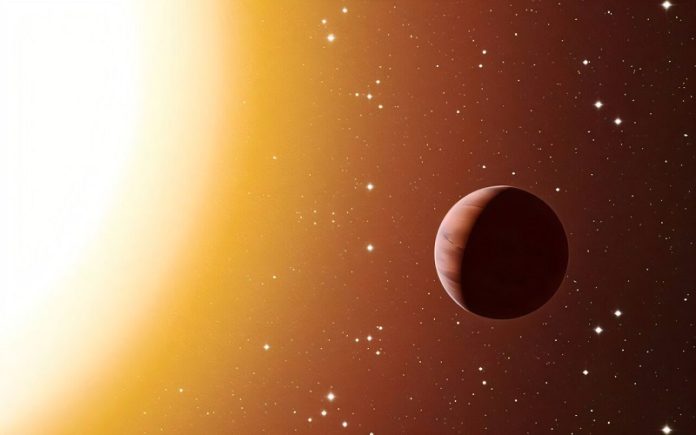
A new study led by University College London (UCL) researchers suggests that unpredictable stars could be distorting our understanding of distant planets.
Many exoplanets—planets outside our solar system—are studied by looking at how their host stars’ light changes when they pass in front of them.
However, stars that brighten and dim over hours or days may be skewing our observations, making planets appear larger, hotter, or even more water-rich than they actually are.
Scientists detect exoplanets by observing dips in starlight when a planet crosses in front of its star.
This technique, called the transit method, helps determine a planet’s size, temperature, and even atmospheric composition based on how much light is blocked and how the starlight changes as it passes through the planet’s atmosphere.
However, the new study, published in The Astrophysical Journal Supplement, found that variations in the stars themselves may be interfering with these measurements more than we previously thought.
Researchers analyzed 20 years of data from the Hubble Space Telescope, looking at 20 Jupiter- and Neptune-sized exoplanets. They combined data from two of Hubble’s instruments—the Space Telescope Imaging Spectrograph (STIS) and the Wide Field Camera 3 (WFC3)—to ensure consistent results.
Their analysis revealed that for about half of the planets, the changing brightness of their host stars affected the data. For six planets, their models fit better when they accounted for stellar variability. Another six planets showed minor distortions from their stars.
Lead author Dr. Arianna Saba, who conducted the research as part of her Ph.D. at UCL, said:
“These results were a surprise—we found more contamination from stars than expected. This is important because understanding how stars’ variability affects our measurements will help us improve our models and make the best use of future space missions.”
Why are some stars “patchy”?
Co-author Alexandra (Alex) Thompson, a Ph.D. student at UCL, explained that some stars have hotter and cooler patches on their surfaces. These variations are caused by magnetic activity and can make exoplanets appear different than they really are.
- Hot, bright regions (faculae) emit more light. If a planet passes in front of one of these spots, it may seem larger because it blocks more light. It may also appear hotter or denser than it really is.
- Cool, dark starspots have the opposite effect. A planet passing in front of a dark patch may seem smaller than it really is.
- False detections: Sometimes, a dimming star can mimic a planet transit, leading scientists to think a planet exists when there isn’t one.
How can scientists solve this problem?
The team suggested two ways to tell if stellar variability is affecting exoplanet observations:
- Check the planet’s spectrum—if the light pattern doesn’t match what’s expected for a planet, stellar activity may be responsible.
- Compare multiple observations of the same planet over time—if they change significantly, it’s likely due to stellar variations rather than the planet itself.
Observing different wavelengths of light can also help. The study found that shorter wavelengths (optical and near-ultraviolet) are most affected by stellar activity. Infrared observations, like those from the James Webb Space Telescope (JWST), may be less distorted.
Understanding how stars behave is crucial for accurately identifying planets and their atmospheres. Future missions, like Ariel and Twinkle, will collect even larger datasets, making it even more important to correct for these distortions.
“We learn about exoplanets from their host stars’ light, but sometimes it’s hard to separate signals from the star and the planet,” Thompson said. “By using the right wavelengths and methods, we can reduce errors and get a clearer picture of these alien worlds.”
With this new knowledge, astronomers will be better equipped to explore Earth-like planets and search for signs of life across the galaxy.



